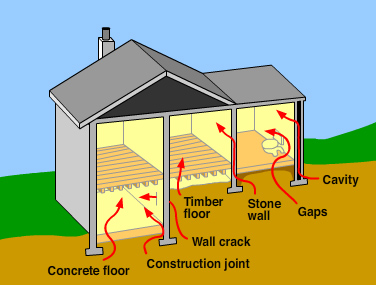US EPA
Is radon really bad for you?
Breathing radon over time increases your risk of lung cancer. Radon is the second leading cause of lung cancer in the United States. Nationally, the EPA estimates that about 21,000 people die each year from radon-related lung cancer. Only smoking causes more lung cancer deaths.
The remaining 46 states showed up to have some personnel and activities dedicated to radon control in the state government, mostly state health departments. Dr. Jerry M. Cuttler, a radiation professional and also expert to the American Council on Scientific Research and Wellness, has actually co-authored a paper qualified "Threshold for Radon-Induced Lung Cancer From Breathed In Plutonium Data," in addition to Charles L. Sanders. Dr. Cuttler explains that gauged radon levels as well as cancer end results record, as a matter of fact, a considerable decrease below the all-natural occurrence of lung cancer cells. These observations negate the predictions made using the LNT dose-response design.
Radon https://claytonqizx812.shutterfly.com/39 airborne is thought about to be a bigger health and wellness hazard than radon in residential water so the United States Environmental Protection Agency suggestion is to not test for radon in water unless a radon in air examination is above the activity degree. Nevertheless, some US states, such as Maine where radon degrees are greater than the national average, recommend all well water should be evaluated for radon. The United States government has not establish an action level for radon in water.
Is radon mitigation really necessary?
When radon gas enters the body, it exposes the lungs to small amounts of radiation. In small quantities, experts say this is harmless. However, in persistent exposures or larger quantities, radon can damage the cells of the lining of the lungs, increasing a person's chance of developing lung cancer.
This does not indicate that a degree listed below 4.0 pCi/L is taken into consideration appropriate, as stated in the BEIR VI study. It is approximated that a decrease of radon levels to below 2 pCi/L nationwide would likely reduce the annual lung cancer cells deaths credited to radon by 50%. Nonetheless, despite an activity degree of 2.0 pCi/L, the cancer cells risk presented by radon gas is still numerous times more than the risks allowed for carcinogens in our food and water.
- Lung cancer risk rises 16% per 2.7 pCi/L boost in radon direct exposure.
- Radon gas is a naturally-occurring result of the radioactive degeneration of Uranium in the soil.
- Relying on your geographic location, the radon degrees of the air you take a breath outside of your home might be as high as 0.75 pCi/L.
- The national standard of outside radon levels is 0.4 pCi/L as well as it is estimated by the National Academy of Sciences that exterior radon degrees trigger roughly 800 of the 21,000 radon generated lung cancer deaths in the United States yearly.
- The US EPA has actually placed it clearly, specifying, "Any kind of radon exposure has some threat of triggering lung cancer cells.

How do you eliminate radon?
Possible symptoms include shortness of breath (difficulty breathing), a new or worsening cough, pain or tightness in the chest, hoarseness, or trouble swallowing. If you smoke and you know you've been exposed to high levels of radon, it's very important to quit smoking.
The national standard of outdoors radon degrees is 0.4 pCi/L as well as it is approximated by the National Academy of Sciences that outside radon levels trigger around 800 of the 21,000 radon generated lung cancer cells fatalities in the US each year. Your danger of lung cancer enhances considerably with exposure to higher radon degrees. Lung cancer danger rises 16% per 2.7 pCi/L increase in radon direct exposure. World Health And Wellness Company, 2009 studies reveal that radon is the key source of lung cancer cells amongst people that have never smoked.
Wellness
Radon gas enters homes from below, through fractures in the foundations and floorings. With the majority of homeowners recognizing reasonably little regarding radon gas and its threats, there's plenty to discover prior to taking on the trouble. Recognizing the scope of radon direct exposure, the parts of the nation with the highest degree of gas manufacturing, and also reduction costs will certainly prepare you for handling the obstacle. This is one of the most generally asked concerns after, "What is radon testing?" The soil under your house isn't a random mix of dust. You can not tell just by looking, yet there are some radioactive elements that comprise common minerals and also rocks discovered mixed into the soil across the country.
How long does it take for radon to cause cancer?
Fact: You will reduce your risk of lung cancer when you reduce radon levels, even if you've lived with an elevated radon level for a long time. Keep in mind that radon levels below 4 pCi/L still pose some risk and that radon levels can be reduced to 2 pCi/L or below in most homes.